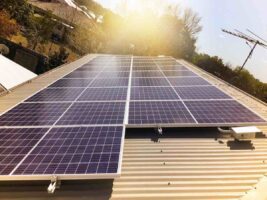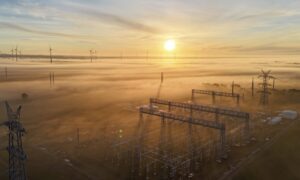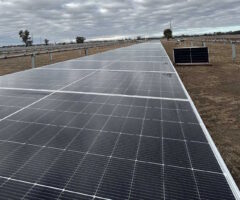Anti-renewable campaigners across the eastern states have come out in force against a New South Wales (NSW) wind project they live nowhere near, trying to convince the state planning authority that coal and nuclear are better alternatives.
The 1.3 gigawatt (GW) Pottinger wind farm – which could also include a major solar farm and a massive battery sized at up to 500 MW / 2GWh battery has come through what, on the face of it, looks like a gruelling submission process, collecting 84 noes and 77 ayes.
But the details of the submissions reveal that there were no objections from anyone living within 20 kilometres of the project, located sough of Hay in the south west of the state. There were seven submissions from locals, and all of those were in support.
There were 12 objections from people within 100km of the project and 15 in support, and the remaining 126 submissions came from “the rest of Australia”, according to the submissions response lodged by developers Someva Renewables and its development partner AGL Energy.

The opposition is “certainly organised” and is coming from geographic clusters of activity, says Someva development director Tim Mead.
“From our perspective, the objections in this case came from many seemingly organised groups, some in fact were organised groups but in other cases they were clearly clusters of individuals from the same location,” he told Renew Economy.
“You see repeat styles and repeat messages.
“We’ve got objections from Queensland, Victoria, and to your point about whether these hold merit and whether the planning process takes them into account, the answer is no.”
However, the project will still need to be assessed by the Independent Planning Commissions (IPC), NSW’s planning arbiter which kicks in when a council objects or more than 50 community objections are received.
Objections count towards the IPC trigger even if they are made by people living in other states.
I object!
Few of the objecting submissions specifically commented on the Pottinger project itself.
Most objections congregated around economics, claiming that wind with battery storage isn’t an economical way to create affordable energy generation and that coal and nuclear options are.
Biodiversity concerns were the second largest theme, with worries about the Plains Wanderer bird, migratory species, and native vegetation, as well as the impact on waterways and waste management – specifically recycling turbines at the end of their life.
The objectors raised the issue of the loss of farmland and – interestingly, given that most don’t live close to the area – the visual impact from the turbines.
These included complaints that the wind turbines were “ugly monstrosities”, and – from someone that lived at least 20 kms from the turbines – that the “visual impact of these structures would be devastating, not only to the aesthetic value of our community but also to our local tourism industry which relies on unspoiled scenery.”
Some complained that the turbines would be seen along the Cobb Highway between Hay and Deniliquin, but the Someva response noted the nearest turbine is more than 10kms from the highway in a straight line, and most at least 15kms.

The Pottinger wind and battery project comes with up to 900 construction jobs, up to 50 ongoing jobs, and an estimated $2.2 billion of economic benefits to the region.
A 300 MW solar farm is also being planned for the site.
As a result, despite the outsiders’ worries about “inequitable distribution of benefits and the potential for disharmony in the community between supporting and objecting groups”, the local submissions in favour were very happy with the economic benefits, such as new jobs with Australian-owned companies.
A big driver was the economic stimulus the project would deliver to the local community, and the drought protection created by extra income for both landowners and potential workers.

Manifestations of organised opposition
Australia’s anti-renewables campaigns have become increasingly organised with the heat coalescing around wind, both onshore and offshore.
Research shows that conservative think tanks are coordinating campaigns against climate campaigns and clean energy technologies, from the well-debunked ‘offshore wind kills whales’ to fear mongering about lost agricultural land in Victoria.
The energy alternative that these campaigns are putting up is nuclear power, a generation source with such long lead times and cost to leave countries dependent on fossil fuels for decades longer than necessary.
At the large corporation end, fossil fuel companies have been using the same fundamental messages about why technologies that don’t use their products are bad, for 57 years.
Casting doubt on whether new technologies can help the world meet carbon reduction goals, demanding governments follow policy neutrality to allow already-successful fossil fuels to ‘compete’ with new greener technologies – a tactic the Coalition tested this week as it tried to cram gas into the Capacity Investment Scheme (CIS).
And fear mongering about energy security, another tactic the Coalition has been rolling out again in 2024.
The manifestation of these long term, well funded campaigns is the likes of the “rally against reckless renewables” in Canberra in February, apparently grassroots protests against offshore wind in Wollongong which use many of the talking points issued by conservative think tanks, and politicians such as Barnaby Joyce.
Unicorn REZ
The South West Renewable Energy Zone (REZ), where the Pottinger project will live, is a bit of a unicorn in NSW, according to Mead, as it’s the only one where projects don’t have a lot of residential neighbours.
The Pottinger energy hub has just seven neighbours within 10km which has allowed AGL and Someva to spend a lot of time with those few landowners.
Access rights to the South West REZ are yet to be resolved which means at best construction for approved projects is not likely to start until 2026, Mead says.
However, the Australian Energy Market Operator (AEMO) suggests access rights should be clarified around December, or January next year.








